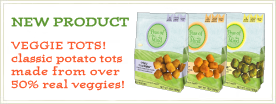Here at Peas, we often make pizza from scratch at home. Making your own pizza is a great way to get kids into the kitchen where they can experiment and create a combination all their own. It makes for a darn fun dinner party as well. Making pizza together is a joyous experience, and its incredibly economical to boot.
 Mmmmmm... heirloom tomato.
Mmmmmm... heirloom tomato.Producing a crackly crust can be tough to achieve at home, even when using a pizza stone in an oven at the highest temperature setting.
On this particular evening, our insanely curious friend hacked the lock on his home oven so he could effectively bake with the oven in cleaning mode. Yikes!!! At a temperatures nearing 900 degrees at times, one pizza cooked in a mere 45 seconds! Do not try this at home!!!
 That gadget in hand is an infrared thermometer. Yes, it says 845 degrees F!
That gadget in hand is an infrared thermometer. Yes, it says 845 degrees F! Now that's crrrrispy!
Now that's crrrrispy!Here's a safer way to imitate this crazy hack.
The "Cast Iron Skillet + Broiler" Method:
Crank your oven to its hottest (approved) setting with a rack in the central position. Heat a cast iron skillet on the stove top, giving it time to get super hot.
2 minutes before you bake, switch the oven to the broiler setting.
When you're pizza is topped and ready to bake, invert the cast iron skillet and slide your raw pizza onto the scorching hot base of the skillet. Carefully (!) transfer the skillet to the oven (now on broil). Keep an eye on that pizza because it will cook faster than imaginable!
What's your spin on homemade pizza? Tips to share?
Thanks for hosting, Jeff!!!


